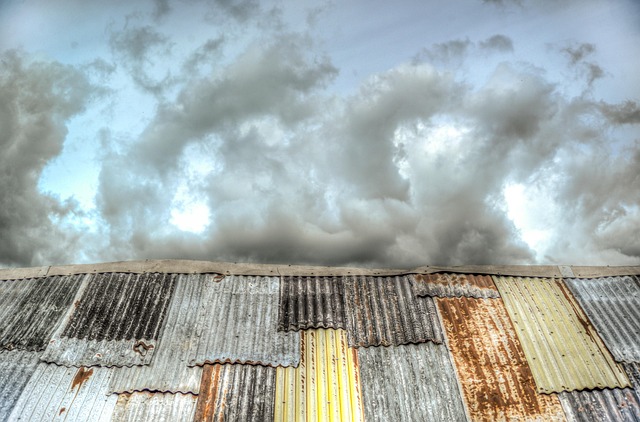Low slope roofing is a cost-effective and durable option for warehouses and commercial buildings, featuring slopes under 20 degrees, easy installation, and excellent weather resistance. Materials like EPDM and TPO prevent leaks, efficient drainage systems avoid structural issues, and simple insulation addition enhances energy efficiency. Popular among industrial settings, this style offers practical advantages, reduced material costs, and easy maintenance. Modern systems use advanced materials and technologies for enhanced functionality and aesthetics. Installation requires meticulous preparation and attention to detail, while regular maintenance, including inspections and protective coatings, prolongs lifespan. Choosing a qualified contractor is crucial for long-term durability and appealing commercial roofing.
“Uncover the advantages and applications of low slope roofing, a popular choice for warehouse and large commercial structures. This comprehensive guide explores the fundamentals, from defining ‘low slope’ to highlighting its benefits in cost-efficiency and durability. We delve into specific uses, materials, installation processes, and maintenance tips tailored to these systems.
Learn about selecting the ideal contractor for your low slope roofing project near you, ensuring a reliable and long-lasting solution.”
- Understanding Low Slope Roofing: Basics and Benefits
- Common Applications: Warehouses and Commercial Spaces
- Materials Used in Modern Low Slope Roof Systems
- Installation Process: Step-by-Step Guide Near You
- Maintenance Tips to Prolong Low Slope Roof Lifespan
- Choosing the Right Contractor for Your Low Slope Roofing
Understanding Low Slope Roofing: Basics and Benefits

Low slope roofing is a popular choice for warehouses and large commercial buildings due to its unique advantages. Unlike traditional sloped roofs, which are steep and often require specialized construction techniques, low pitch roofs offer a more straightforward and cost-effective solution. This type of roofing system typically has a slope of less than 20 degrees, making it easier to install and maintain.
One of the key benefits of low slope roofing near me is its durability. Despite the shallow angle, these roofs are designed to withstand harsh weather conditions and heavy loads. They often feature robust materials like EPDM (Ethylene Propylene Diene Monomer) or TPO (Thermoplastic Olefin), which provide excellent resistance to leaks and damage. Additionally, low slope roofing allows for efficient roof drainage systems, ensuring water is swiftly removed, preventing potential structural issues. This design also simplifies the process of adding insulation, enhancing energy efficiency in large commercial spaces.
Common Applications: Warehouses and Commercial Spaces

Low slope roofing is a popular choice for warehouses and large commercial spaces due to its practical advantages and cost-effectiveness. This style of roofing, often referred to as low pitch roof or flat roof near me, provides an efficient solution for buildings with expansive interiors where aesthetics are not the primary design concern. Such roofs are typically found in industrial settings, including warehouses, distribution centers, and large-scale retail stores. By employing low slope roofing systems, these commercial spaces can benefit from simplified construction processes, reduced material costs, and enhanced functionality.
In addition to their economic benefits, low slope roofs offer practical features like easy access for maintenance and repairs, as well as efficient roof drainage systems. This makes them a smart choice for areas with varying weather conditions, ensuring proper water management. Unlike sloped roof designs that may require additional structural support and present steeper installation challenges, low pitch roofs are designed for simplicity and practicality, making them a go-to option for warehouses and similar commercial applications.
Materials Used in Modern Low Slope Roof Systems

Modern low slope roofing systems near me have evolved to incorporate a diverse range of materials, enhancing both their functionality and aesthetics. One of the most common materials is rubber, particularly ethylene propylene diene monomer (EPDM) and modified bitumen. These materials are known for their durability, resistance to extreme weather conditions, and longevity, making them ideal choices for commercial spaces. EPDM, in particular, offers excellent flexibility and can be installed over a variety of substrates, while modified bitumen combines asphalt with additives to improve its performance.
Additionally, metal is another popular option for low pitch roof designs. Steel and aluminum are frequently used due to their lightweight nature, high strength-to-weight ratio, and resistance to corrosion. These materials also offer easy maintenance and the ability to reflect heat, contributing to improved energy efficiency in large commercial spaces. In terms of roof drainage systems, modern low slope roofing incorporates advanced technologies like gravel-embedded membranes and mechanical drains, ensuring effective water runoff and preventing potential damage caused by pooling water.
Installation Process: Step-by-Step Guide Near You

The installation process for low slope roofing systems, popular among warehouses and commercial spaces due to their efficient design, involves several meticulous steps. Typically, the process begins with preparing the surface, ensuring it’s clean and free from debris. A key consideration is the proper placement of underlayment, which acts as a protective barrier between the roof and potential moisture intrusion. After installing the underlayment, professionals begin laying the low pitch roof materials, often in long rolls or sheets, carefully sealing each section to create a seamless finish.
One crucial aspect of low slope roofing near me is effective roof drainage systems. These systems, designed for sloped roofs, are integrated into the installation process to ensure proper water runoff and prevent ponding. By following these precise steps, from surface preparation to roof drainage system implementation, you can rely on a durable and reliable low-pitched roof solution for your commercial property.
Maintenance Tips to Prolong Low Slope Roof Lifespan

Low slope roofing, a prevalent choice for warehouses and commercial buildings, requires careful maintenance to ensure longevity. Given their flat or gently sloped nature, these roofs are susceptible to specific challenges that can impact their performance over time. Regular inspections are key; identifying potential issues early on makes repairs more manageable. Look out for signs of water damage, including leaks, mold, or decaying materials, as these could indicate compromised seals or flashing.
Proper roof drainage systems are vital for low pitch roofs. Ensure smooth water flow off the roof by cleaning gutters and downspouts regularly. Debris buildup can obstruct water flow, leading to standing water and potential roof deterioration. Additionally, consider applying a protective coating to enhance the roof’s durability against UV rays and weather conditions, further extending its lifespan when combined with routine maintenance checks.
Choosing the Right Contractor for Your Low Slope Roofing

When considering a low slope roofing system for your commercial property, selecting the right contractor is paramount. It’s crucial to look beyond just cost and consider their expertise in handling such specific roofing needs. Opting for a local contractor experienced in low slope roofing near me ensures they understand regional climate challenges and building codes, vital aspects for long-term durability.
The ideal contractor should offer comprehensive services, from initial design consultation to installation and ongoing maintenance. They must be equipped to suggest efficient roof drainage systems tailored to the low pitch roof design while ensuring your space looks as intended. Their proficiency in sloped roof design will also guarantee a weatherproof and aesthetically pleasing finish, safeguarding your investment for years.
